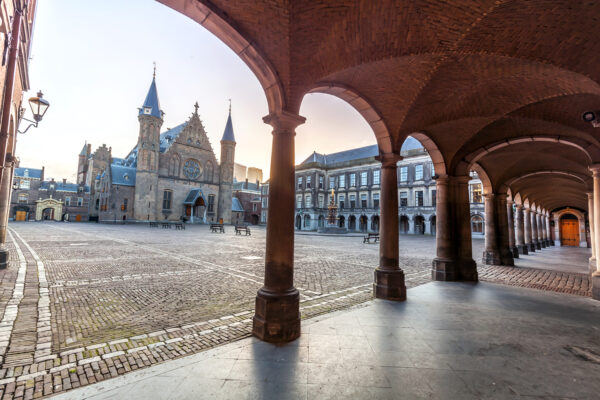
As expected, no single party won a majority of the votes in the Netherlands on Wednesday. Parties must now form a coalition in parliament in order to govern.
How does that work?
In the past, the monarch would play a coordinating role.
He or she would receive all party leaders in the aftermath of the election before appointing an informateur to explore possible coalitions; unusually a retired politician of some stature. The informateur (best translated as “explorer”) would hold talks and report back to the head of state. By the time one coalition option had emerged as the most probable, the king or queen would name a formateur — usually the prospective prime minister — to begin the process of forming a government.
Parliament cut the king out of the process in 2012. It now appoints an informateur itself.
The first time parliament managed the process was later that same year. It wasn’t exactly a trial by fire. All the parties recognized there was only one good option: a left-right compromise between the Labor Party and Mark Rutte’s liberals.
This time could be trickier. With four or five parties needed for a majority, politicians may come to regret eliminating the impartial monarch from the process.
There is still a semi-neutral mediator: the speaker of the lower chamber, Labor’s Khadija Arib. She is expected to chair a meeting of party leaders on Thursday.
Which coalitions are possible?
All major parties have ruled out forming a government with the nationalist Freedom Party of Geert Wilders.
As a result, it is hard to imagine a government without Rutte’s liberals, the Christian Democrats and the liberal Democrats. They have a lot in common and have governed together in the past.
But it looks like they would need at least one other party for a majority.
The Greens are the logical first choice, given that they quadrupled their seats. But they are reluctant to govern without Labor.
Adding Labor to the coalition would tilt the balance to the left and make it harder for the three parties in the center to enact health, labor and tax reforms. Labor also suffered an historic defeat and may prefer to lick its wounds in opposition.
A third option is governing with the Christian right, but that would be uncomfortable for the secular liberal Democrats.
How long does forming a government take?
Usually months. Labor and the liberals needed only 54 days to form a government in 2012 and that was quick by Dutch standards.
The record was in 1977, when it took 208 days to form a government. The average of the last twenty years has been 92 days.
Who governs in the meantime?
Rutte and his cabinet stay on as caretakers until a new government can be formed.
The new parliament decides which issues the caretaker government can take responsibility for and which should wait for their successors. That may get tricky the closer we get to September, when the government, caretaker or not, must introduce a budget for 2018.
